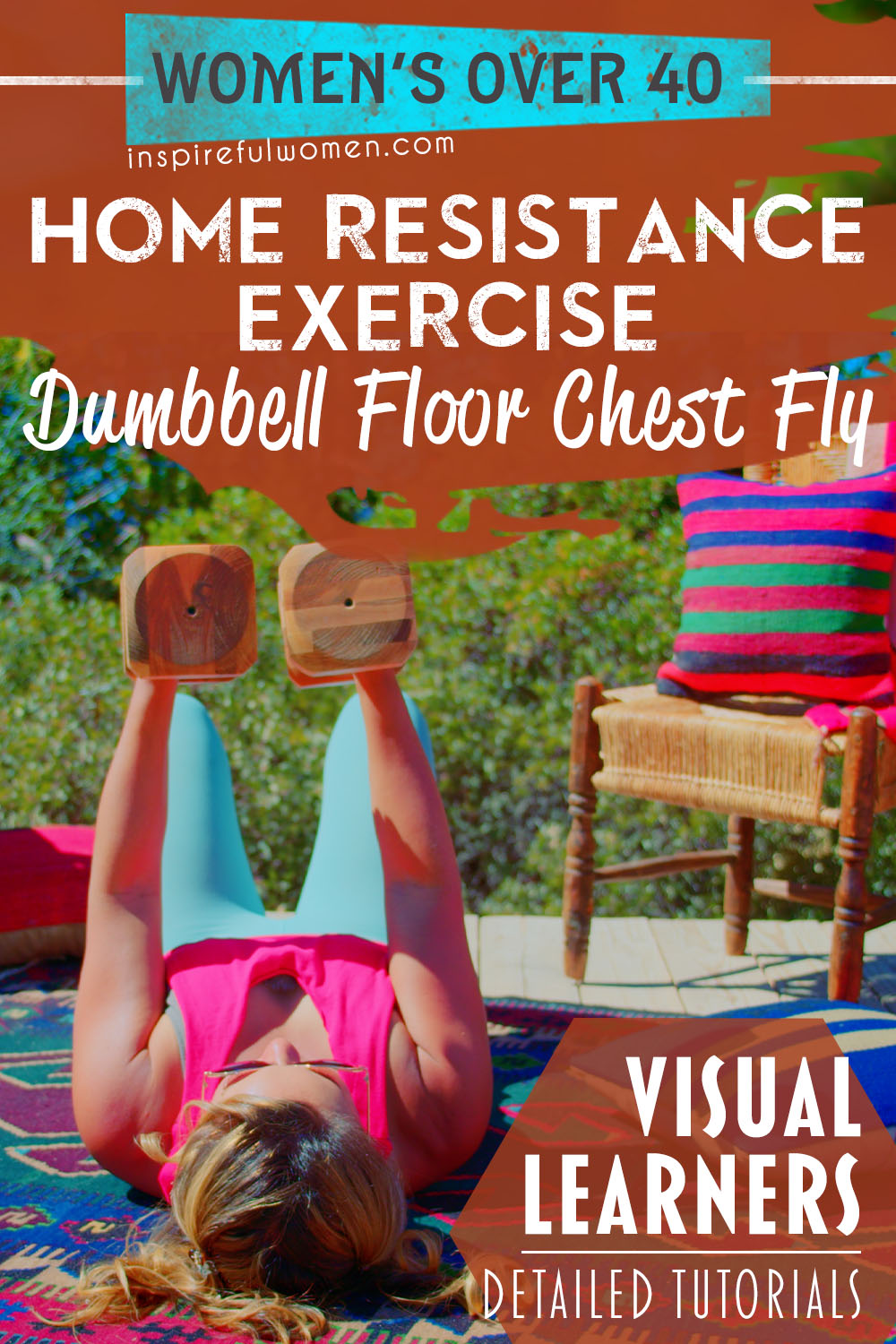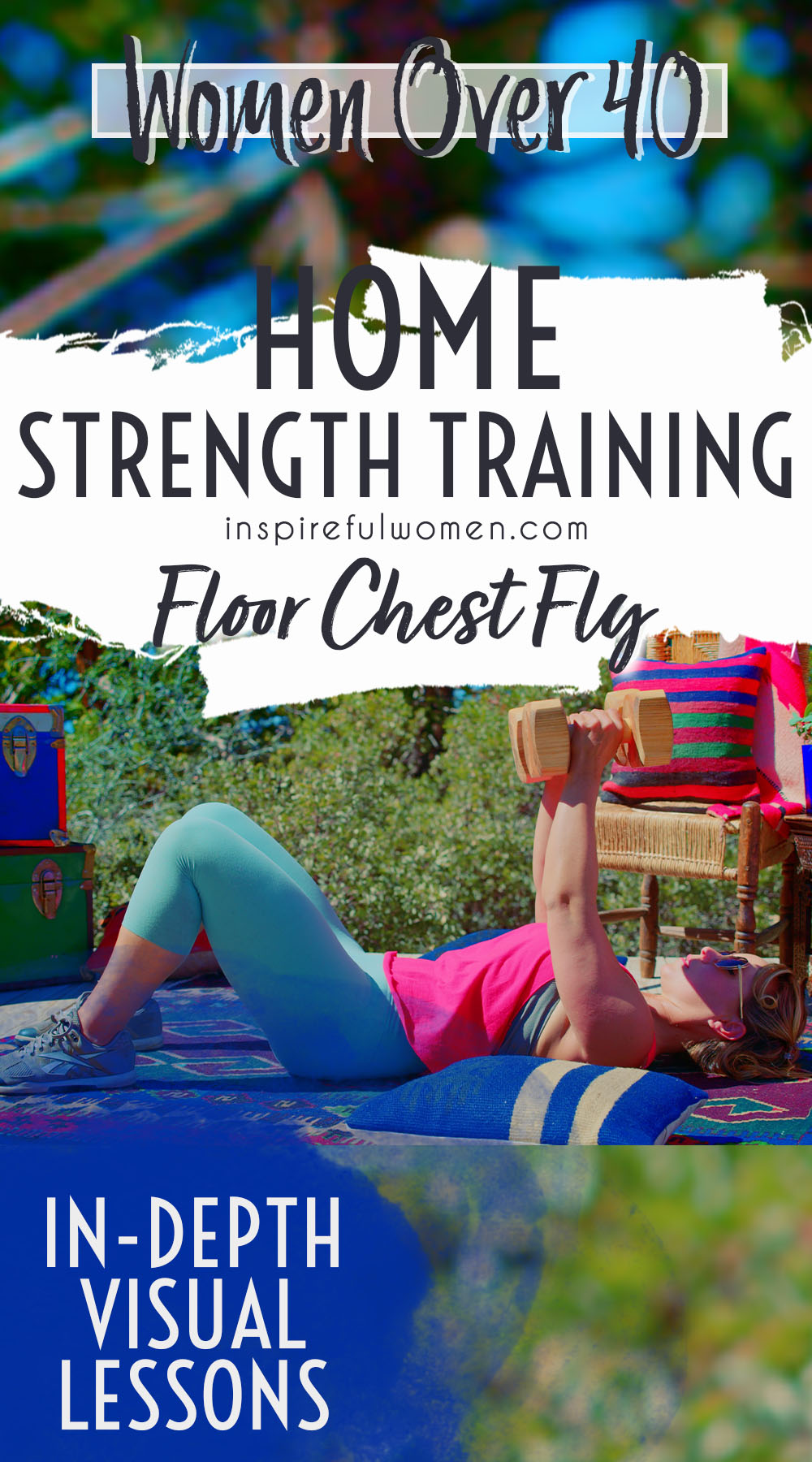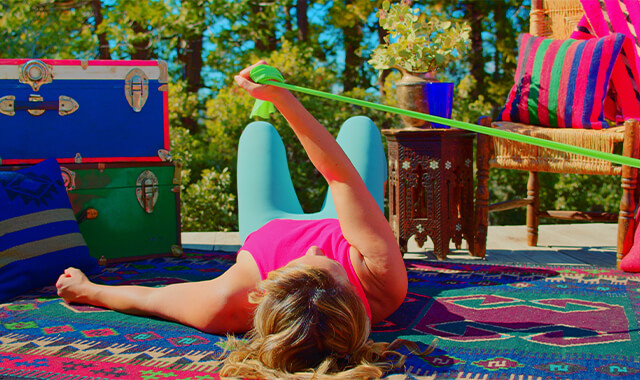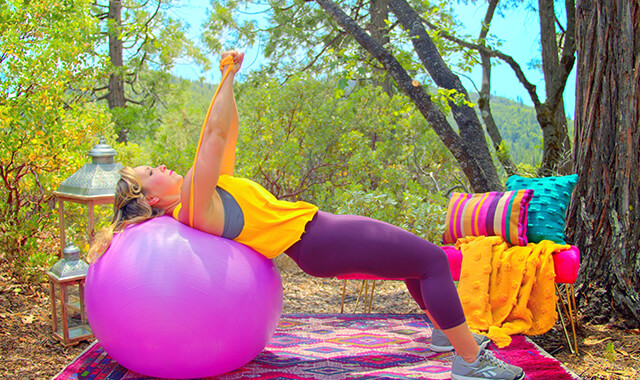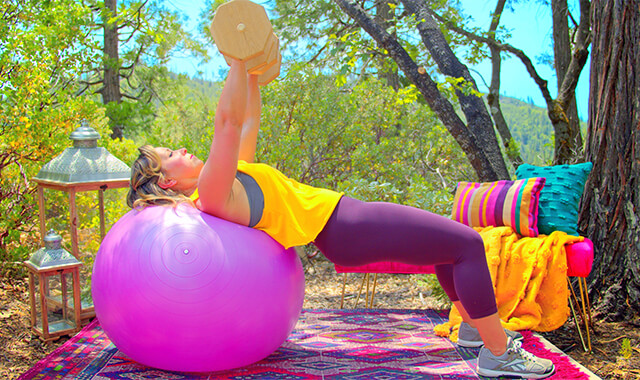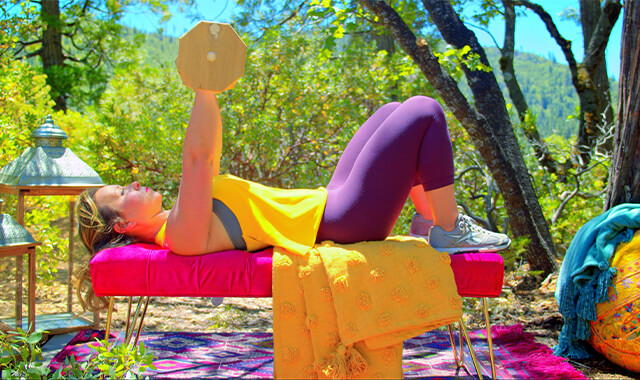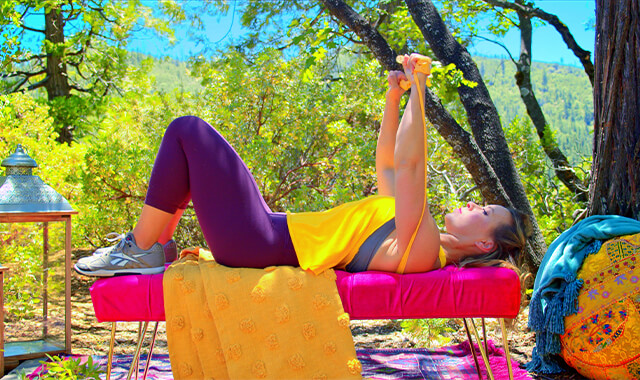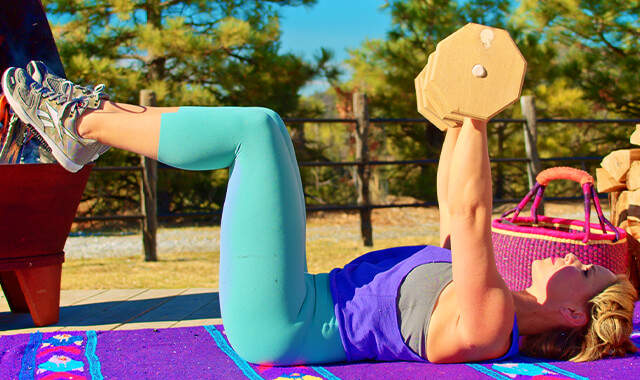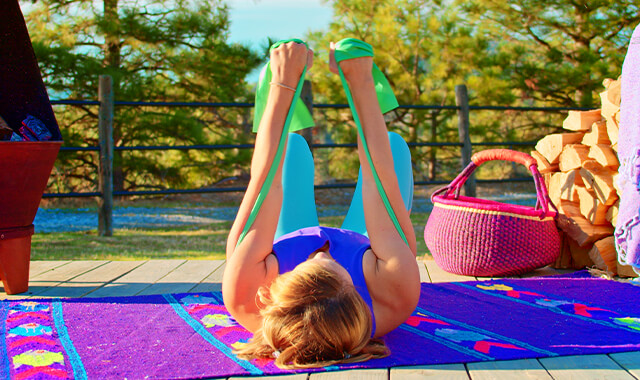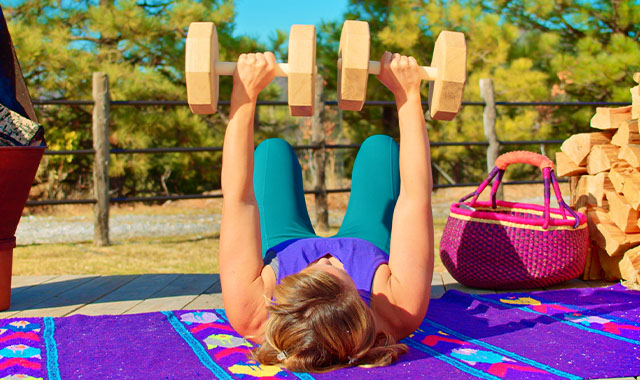Dumbbell Floor Chest Fly
How to Do the Floor Lying Dumbbell Chest Fly - Easy Chest Fly Alternative| In-Depth Guide [VISUAL LEARNERS] Beginner
Proper Form, Common Mistakes, & Variations | Home Strength Training
WHAT DO YOU WANT TO SEE?
QUICK DEMO
QUICK DEMO
MUSCLES THIS WORKS
MUSCLES
MAIN MUSCLES WORKED IN the Dumbbell Floor Chest Fly
PECTORALIS MAJOR
OTHER MUSCLES WORKED:
- Coracobrachialis
- Anterior deltoid
STARTING POINTERS
Starting Pointers
WHAT WE'RE DOING TODAY
This is a good option if you only have small dumbbells and you want more resistance. This position is safer than a dumbbell fly on a bench or ball because your upper arm is limited on how far it can go. Chest flys on the bench put your shoulder in a position that can hurt the shoulder joint (strain the front capsule of the joint); additionally, the pec is very weak when the arm is back behind the shoulder, if you use heavy weights in this position it is possible to tear your pecs.
The amount of elbow bend can vary, the straighter it is - the hand on the floor, the more the resistance. Straightening the elbow increases the lever arm (the distance between the dumbbell and the shoulder joint). The longer the lever arm, the harder the pectoralis major will need to work to lift the weight. If you double the distance between the dumbbell and your shoulder joint, the muscles will need to work twice as hard to lift the weight. For this exercise if you hold a 10-pound dumbbell one foot away from your shoulder joint, then your muscles will be lifting up 10 pounds, if you increase the distance to 2 ft, then the muscles will be moving 20 pounds of weight.
HOW TO DO THE EXERCISE
LOOKS
HOW Dumbbell Floor Chest Flys SHAPE OUR BODY
Tones and defines the chest muscle.
PROPER FORM
PROPER FORM: Dumbbell Floor Chest Fly
EQUIPMENT, SETS & REPS
EQUIPMENT
SUGGESTED STARTING WEIGHT FOR WOMEN:
5 lbs
SETS & REPS:
2 sets of 8-10 reps.
PACE:
Bring the arm in a moderately quick, slow return to the starting position.
BODY POSITION
BODY POSITION FOR THE Dumbbell Floor Chest Fly
Before beginning, place folded towels on each side of where you will be lying, when your arms are out to the side your hand will rest on these towels. With lighter weights - place the weight on the folded towel.
There are three options for getting into the position when using heavier weights: face up on the floor holding the dumbbells. When the weights are heavier, option #3 may be the safest choice:
- Sit on the floor with one dumbbell placed on each side of your hips. Pick the dumbbells up and place them at the front of your hip creases. Roll back to lie on the floor. Bring the weights up to mid-chest level.
- Sit on the floor with one dumbbell placed beside each hip. Bend your knees with your feet flat on the floor. Roll down so you are lying face up, reach out to each side, and lift the weight up to the hip creases, then bring the weights up to mid-chest level.
- Place two dumbbells together on the floor. Lie down so you are on your side facing the dumbbells. Pull the dumbbells close to your chest. Holding one dumbbell in each hand, hug the weights into your chest and roll onto your back.]
BODY STANCE: Lie face up on the floor. Knees bent, feet flat on the floor. Stabilize your upper body by pulling your shoulder blades inward and down your back. This provides a good stable base to work off of. This movement should not feel gripping or tight, just stable. This becomes more important as the weight you are using increases, the intent is to have the weight on your shoulder blades as opposed to the more flexible - and smaller bones of your rib cage. Your shoulders should be pressed back in contact with the floor - the chest open.
Neutral spine (includes neck)- You should be able to slide a hand between your lower back and the floor.
ARMS: Your upper arms should be out to the side just lower than your shoulder - about mid-chest level (70 degrees from your side) elbows bent about 10 degrees. Hands or forearms resting on the folded towels placed at your sides. This position should be comfortable with no discomfort in your shoulders, elbows, or wrists. It may be necessary to bend your elbows more.
HAND/GRIP: Neutral grip (thumb pointing up dumbbell resting on lower head) facing up when arms are out to the sides) - this should feel comfortable.
HOW TO DO
HOW TO DO Dumbbell Floor Chest Flys
CUE: Your elbows should remain slightly bent throughout the movement.
- Lift the dumbbells up by pulling your upper arms inward, until they are over your chest.
- The dumbbells can be close together at the end of the movement.
- Squeeze your pec at the end of the movement.
- Slowly return to the starting position by moving your arms back out to the side.
- Repeat to complete the reps.
HOW TO SAFELY GET OUT OF THE EXERCISE
From the starting position, set the weights on the floor.
[Care must be taken when setting the weights down, this is more crucial the heavier the weight. Bend your elbows and rest the weights on your chest, move them down to the crease of your hip and off to the side to the floor. Or keep the weights on your chest and roll to your side and set the weights on the floor.]
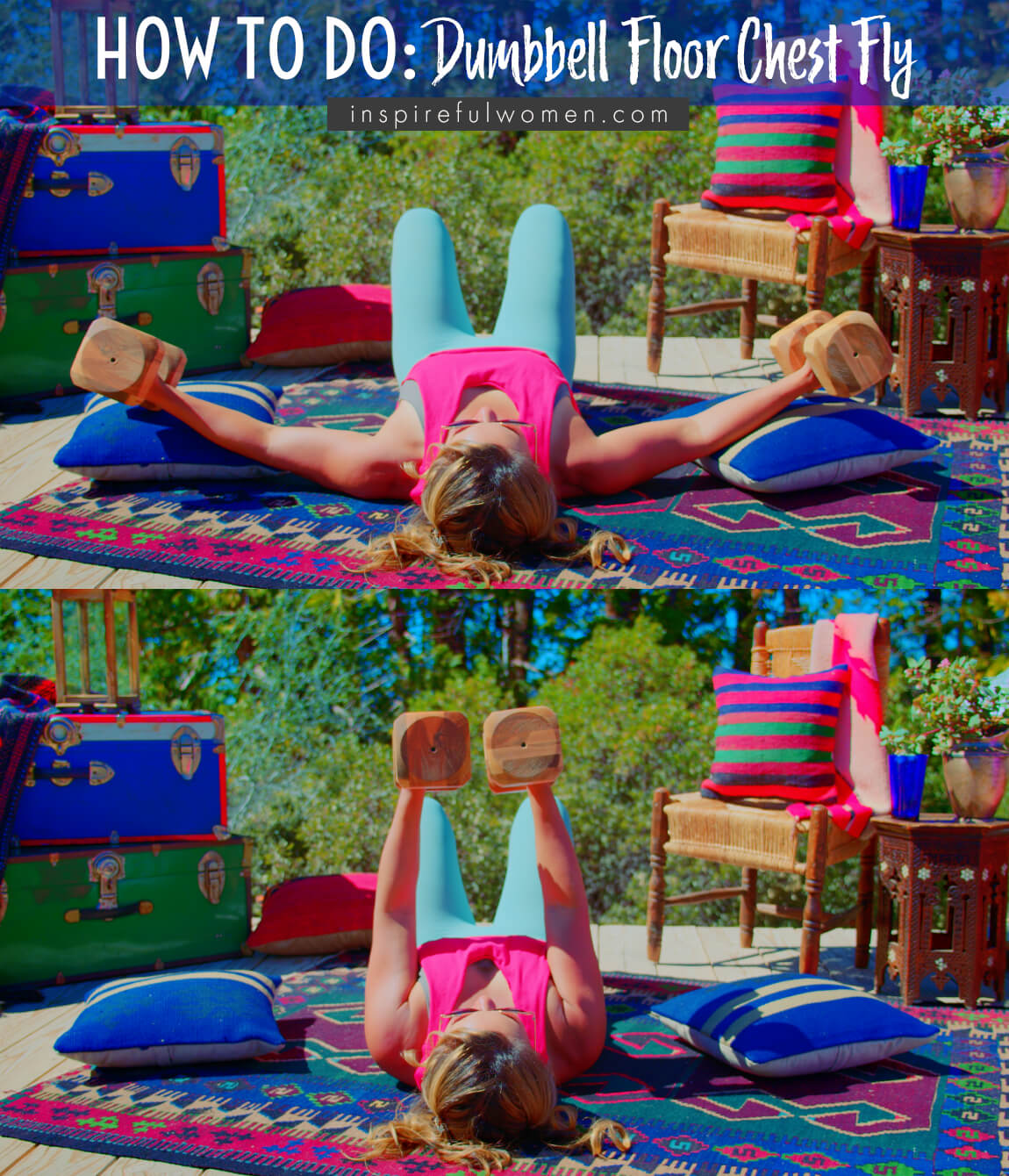
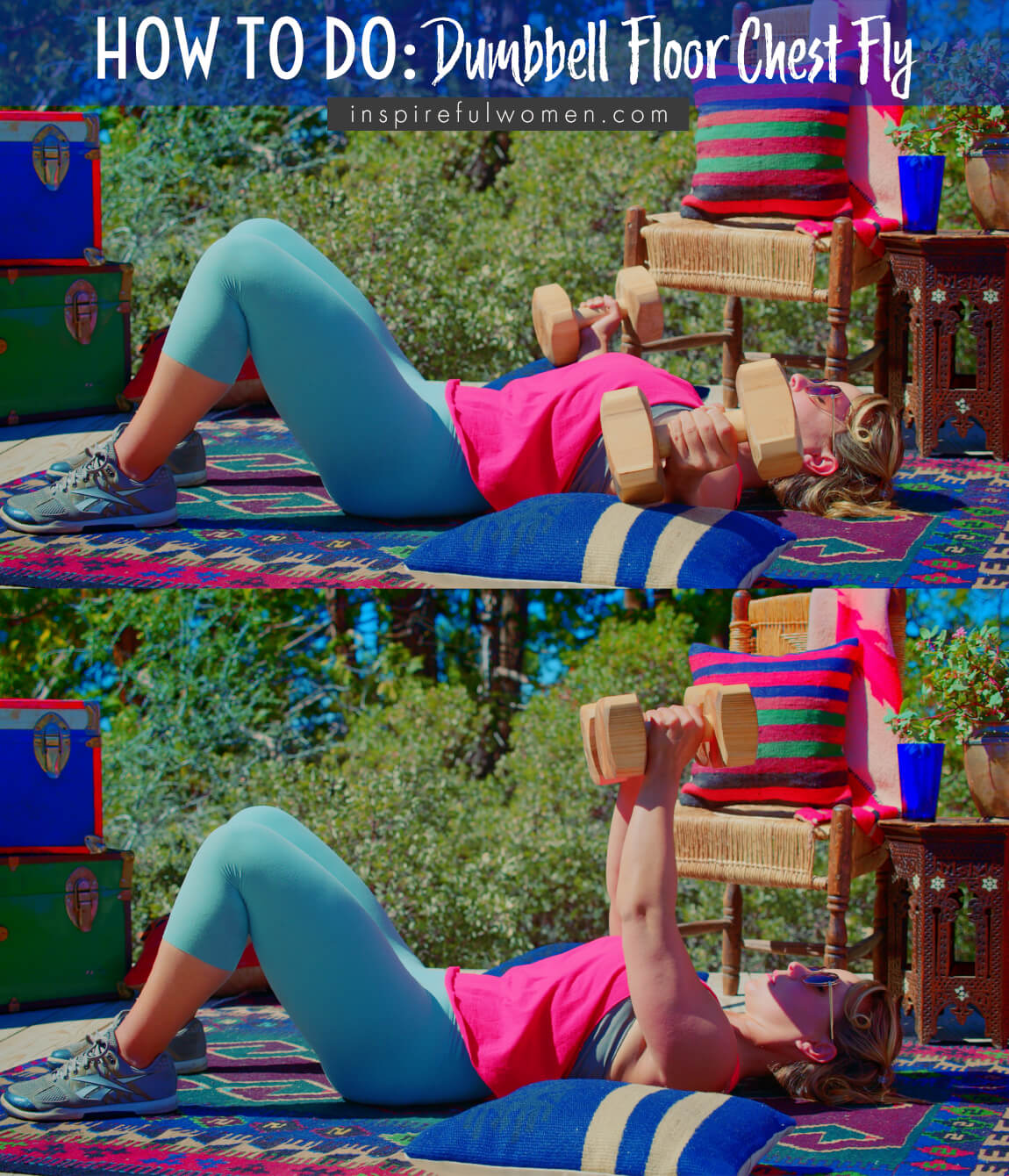
COMMON MISTAKES
COMMON MISTAKES
WHAT TO AVOID WITH THE Dumbbell Floor Chest Fly
KEY TIP:
Guess what? Good news! Many avoids are the same for most movements. Once you learn the basics, there's really only a few extra avoids for each individual movement.
1. Avoid Locked Out Elbow
AVOID: Avoid straightening the elbows.
WHY NOT?
- This puts too much force through the joint and may result in long-term damage over time.
WHAT TO DO:
- Keep the elbows just slightly bent throughout the movement.
2. Avoid Hunching Shoulders
AVOID: Avoid hunching the shoulders up towards the ears.
WHAT TO DO:
- Keep the space between the ear and the shoulder during the entire rep - this opens up the shoulder to avoid tendon irritation and decreases the activity of the upper traps.
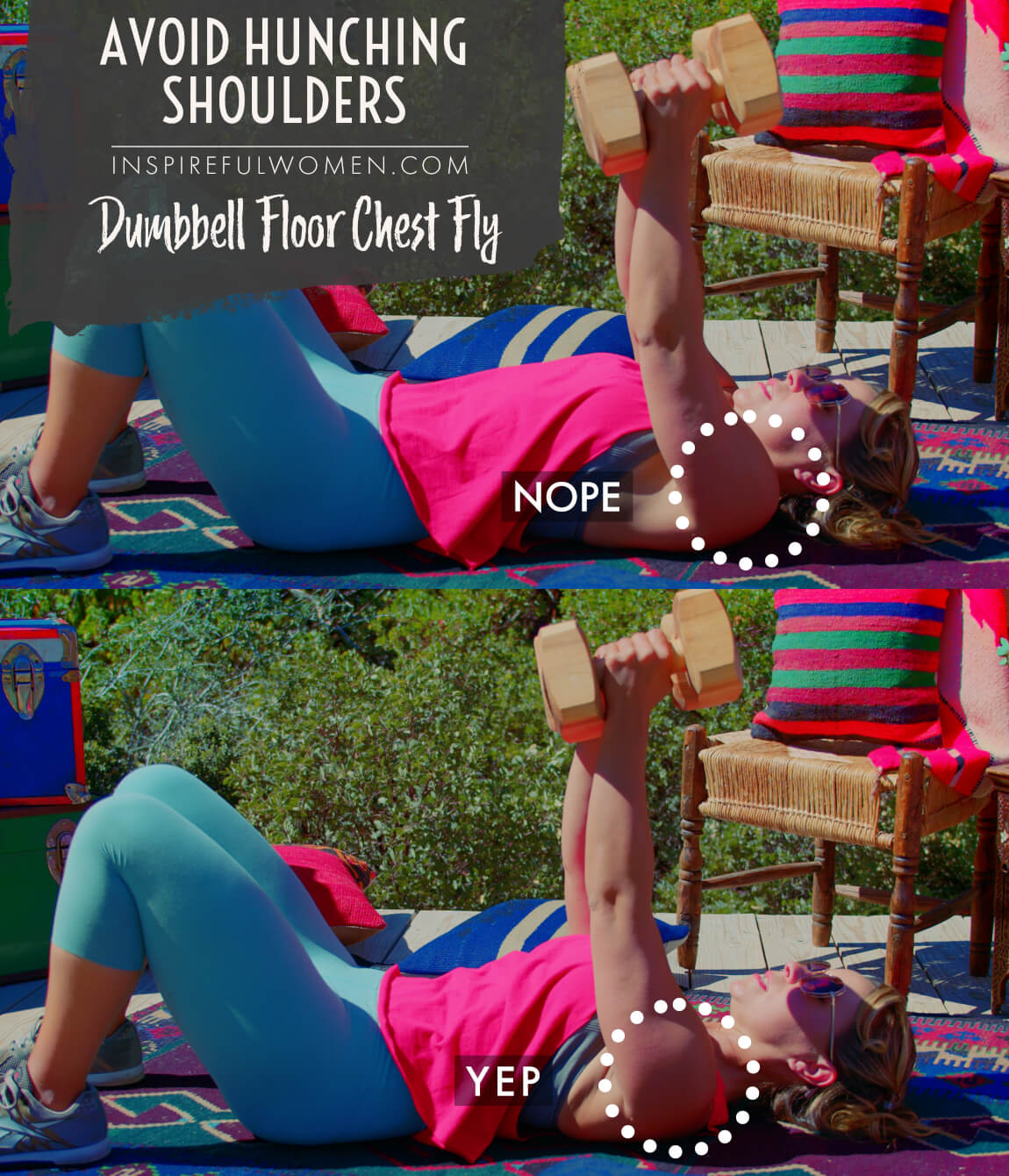
VARIATIONS
VARIATIONS
VARIATIONS OF Dumbbell Floor Chest Flys
MORE BENT ARM
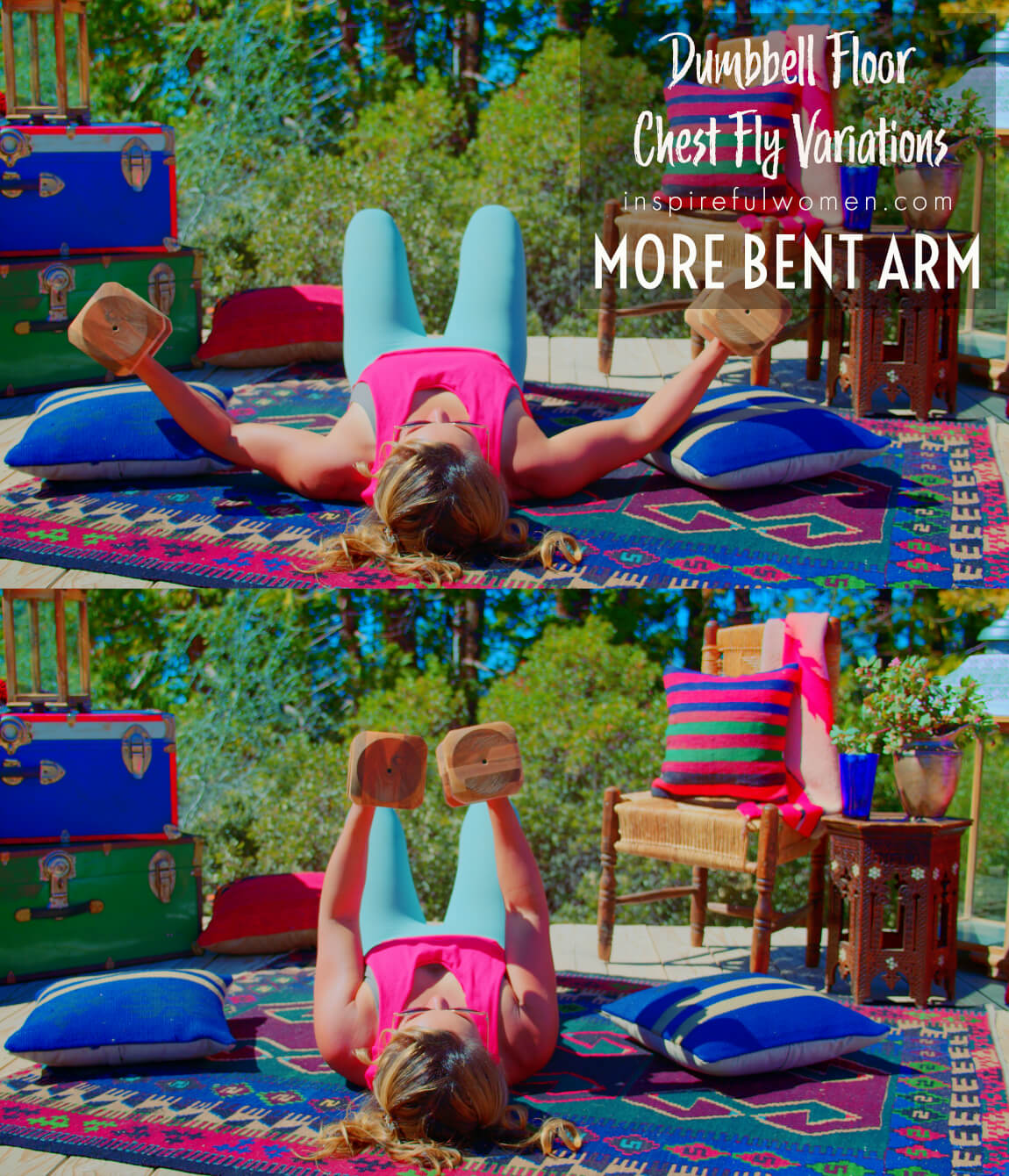
WHAT WE'RE DOING TODAY
WHAT & WHY
BENEFITS OF TRAINING THE Pectoralis major
WHAT
SKIP THE PUSHUPS & DO THIS INSTEAD.
If it’s one thing women hate, it's pushups. Am I right? They are like the ultimate self-esteem killer. If you are feeling out of shape and want to feel really bad about yourself, try doing a pushup. Seriously, who needs that?
Chest flys work our chest muscles without having to do a single pushup. Not only that, your self-image can actually rise instead of a tank as you see yourself capably doing these types of exercises. Pushups have their place, let's be honest, but how about something doing 1 rep of doesn’t just about kill us?
THE AWESOME SAUCE OF DOING BANDED CHEST FLYS (ESCAPING THE HORRIBLE DANGERS OF DUMBBELL CHEST FLYS)
Chest Flys are a popular exercise but if they are done incorrectly they can be tough on the shoulder joints. When you use dumbbells you need to lie down on your back, the arms can get pulled back too far in the beginning position. This can put a lot of strain on the front of the shoulder joint and pull on the chest muscles. This is an exercise that is notorious for ruptures of the chest muscle. The position also allows the head of the upper arm bone (humerus) to glide forward in the socket (on the shoulder blade). This can stretch or tear the front part of the joint capsule - which is a sleeve of connective tissue that runs around the joint and helps to support it. The use of a band helps to eliminate these concerns.
The use of a band for the chest fly is a good option because the resistance of the band lets you challenge the pectoralis muscle in a safer way. At the beginning of the movement, when the shoulders are in a vulnerable position and the pectoralis major is at its weakest, there is the least amount of resistance from the band. As you pull the arms up and the shoulders are in a more stable position, and the pectoralis major gets stronger, the resistance from the band increases. produce force increases. If a dumbbell were used, when the arm is straight out to the side, the lever arm is the longest so the strain on the pectoralis major is the greatest in the position where the pectoralis major is the weakest. As the arm is brought in, the lever arm shortens, and the torque on the shoulder decreases, but the muscle is moving into a position of greater strength.
WHY BOTHER DOING IT?
WHY
WHY DO WE EVEN CARE?
NOT THE MAIN GIG IN OUR WORKOUTS
To be honest, we don’t include a lot of chest-focused work in the Inspireful Women workout program. In general, most women’s chest muscles are strong enough to do their job. More frequently the muscles on the back of the upper body are the ones that need attention. And functionally speaking, we get more benefits from focusing our training a bit more on the backside of our bodies. This seems to help create better balance in our bodies - better posture and healthier shoulder movement, at least this is what I have noticed in my own life. Much of what we do in everyday life tends to use our front side more, so using more of our training time to work our backside can help even things out. On top of that, visually speaking, most of us ladies are not after super-developed pec muscles like the dudes are.
SEEKING BALANCE
Still, strong pectoralis major muscles can help to provide a nice stable base for your arms to work off of. Keeping the muscles that cross the shoulder joint healthy and balanced is important for lifting, pushing, and carrying. Strengthening the biceps and triceps (which we do in the Inspireful Women workouts) without including exercises for the muscles that support and stabilize the shoulder joint can set you up for injury.
STRETCH THE CHEST & MOVE THROUGH THE FULL RANGE OF MOTION
There are not that many exercises that focus on the chest muscles. That could be due to the fact that we do use them a lot in everyday activities, they don’t tend to be weak. But, they do tend to get tight - most likely due to how much we do with our arms in front of us and poor posture. Our everyday life activities tend to keep our arms in a small range, which means we don’t use our joints & muscles through what they can really do.
Something like the band chest fly counteracts this a bit as the band pulls our arm out nice and wide and stretches & elongates the pec muscles. It’s like scratching an itch - it can feel good to move into places our bodies are designed for, but that we don’t do very often in our modern way of life.
Keeping the muscles healthy by including exercises for the pectoralis major that involve taking the arms out to the side - where the muscle is in a lengthened position can help to decrease the tightness or restriction in this muscle.
Pectoralis major also plays a role in breathing. The muscle is spread out across your chest like a fan, attaching to the collar bone, breast bone, and ribs.
EVERYDAY LIFE
EVERYDAY LIFE &
MUSCLE FUNCTION
HOW WE USE OUR pectoralis major IN EVERYDAY LIFE
1. HORIZONTAL ADDUCTION- BRINGING THE ARM TOWARDS THE MIDLINE OF THE BODY
- Enclosing someone in a hug
- Reaching across to fasten a seatbelt
- Putting a belt into pants
- Lifting objects in front of the body
- Carrying heavy objects in front: grocery bag, child
- Picking up your pet chicken 😃
2. UPPER FIBERS BRING THE ARM UP AND ACROSS
- Touching the opposite ear - putting on an earring
- Using a blow dryer on the opposite side of the head as a hand
3. LOWER FIBERS BRING THE ARM DOWN AND ACROSS
- Reaching the opposite hip
4. MEDIAL (INTERNAL) ROTATION OF THE ARM (ROTATING THE UPPER ARM INWARDS)
- Rotating arm down to empty a can
5. CAN ASSIST IN DEPRESSION (MOVE DOWN THE SPINE), DOWNWARD ROTATION, AND PROTRACTION (MOVING FORWARD AROUND THE RIBCAGE, AND STABILIZATION OF THE SHOULDER BLADE AND STABILIZATION OF THE SHOULDER JOINT
- Control during all arm and hand activities that require strength and/or precision - writing, knitting, using a screwdriver
HOW TO FEEL WHAT MUSCLE IS WORKING
How to Feel What Muscle is Working
Place your right hand over your left chest. Straighten your left arm and pull it across your body. You should feel your pectoralis major muscle under your hand. Try pulling the arm across and up - you should feel the muscle activation close to your collarbone. Pull across and down and you should feel the lower part of the muscle contract.
SCIENCY STUFF
SCIENCY STUFF
SPIFFILICIOUS FACTS ABOUT MUSCLES & MOVES
The pectoralis major muscle is a large fan-shaped muscle on the chest. It attaches to the collarbone, sternum (breast bone), the cartilage of the first 6 ribs, and the upper arm.
ALLLL MUSCLES & WHEN
ALL MUSCLES WORKING & WHEN DURING THE Dumbbell Floor Chest Fly
The scapular retractors and depressors (mid and lower traps, rhomboids, lats, pecs (minor and major), subclavius, serratus anterior) become active during set up for the exercise. The muscles of the torso (transversus abdominis,rectus abdominis, erector spinae, obliques, quadratus lumborum work to maintain a neutral spine position - how much they work will depend on how much resistance is used). The muscles of arms (upper - biceps, triceps, coracobrachialis, pecs, lats, teres major, rotator cuff, and forearm - [triceps and biceps], anconeus, radiobrachialis, brachialis, extensor and flexor radial and carpal ulnaris, flexor and extensor digitorum profundus and superficialis, pronator teres, supinator - possibly others, but their contribution is minimal) work to stabilize the wrist, elbow, and shoulder joints. The pectoralis major is the prime mover, acting concentrically to pull the upper arm inward towards the midline. The anterior deltoid and coracobrachialis can contribute to this movement - how much they contribute is affected by how much resistance is being used. The elbow flexors (biceps, brachialis, radiobrachialis) work to hold the elbow joint in a slightly bent position during the fly.
The pectoralis major, anterior deltoid, and coracobrachialis work eccentrically to control the return to the starting position.
PIN IT FOR LATER!
